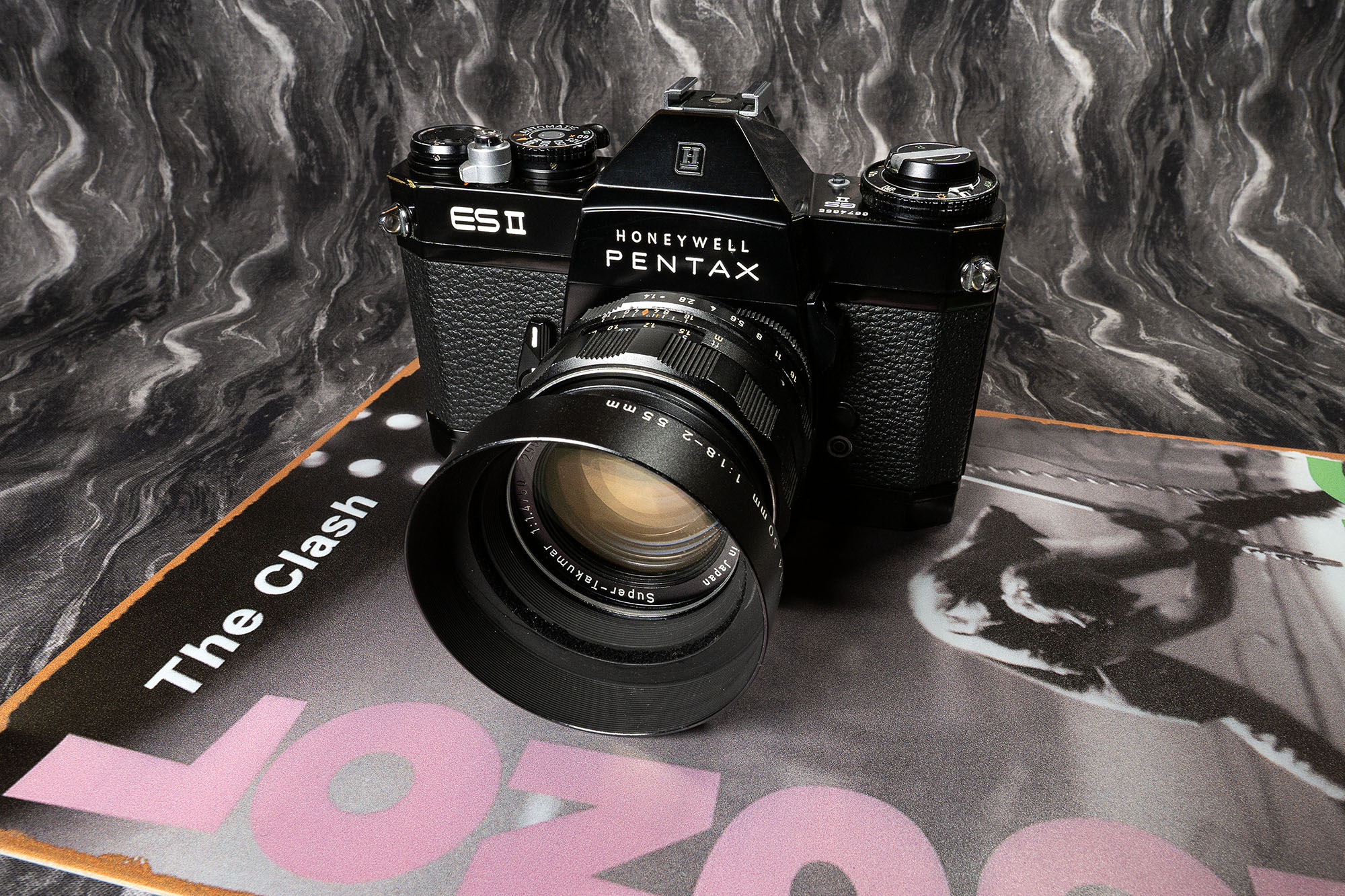At the top of a glass case in an antique “mall” in Las Vegas, two Spotmatics sat neglected. I had eyed them on several trips over the course of the last year, and they were still there. In large letters on the tag hanging from the ES II was the devastating designation, “DEFECTIVE”, with the small-print explanation that the mirror gets stuck sometimes. A similar insult was scrawled on the tag hanging from the other Spottie, an SPF.
Taking a chance, I bought both bodies for a meager sum and took them home. The sticky mirror problem is common to aging Spotmatics. There is a gear train in the base of the camera that, when the lubricant dries up, fails to release the mirror mechanism. A simple cleaning and lubrication of this mechanism often clears the problem.

Starting with the ES II, I had to know if this was the problem. I removed the base plate and slid the circuit board aside, exposing the mechanism. After blowing the dust out of it, I swabbed a little naphtha into the gears and fired the shutter several times. It was already showing improvement. After allowing it to dry, I oiled the bearing surfaces and greased the appropriate places. Hundreds of actuations later, the mirror has not failed once. I then set about cleaning it, replacing the light seals and restoring the other parts to their correct working order. A little brassing on the corners told me it was well loved, and there were no signs of abuse. Inside, it was remarkably clean.
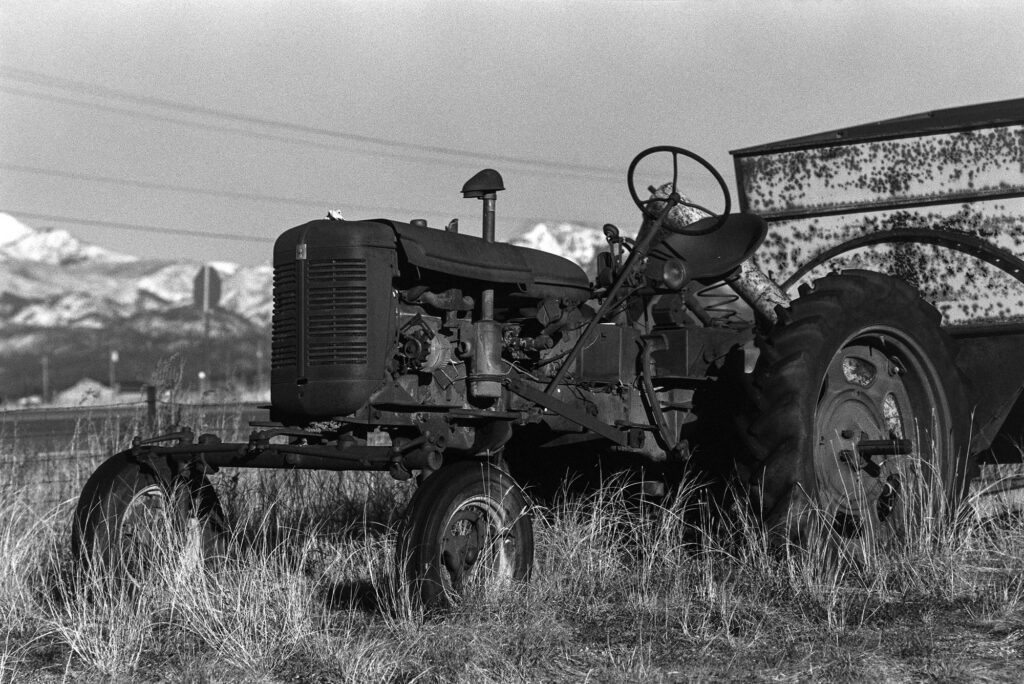
The ES II (along with the SPF) represents the culmination of the Pentax M42 screw-mount dynasty. Produced for only two years, between 1973 and 1975, about 158,000 were made in black or chrome. It signaled a shift from completely manual and mechanical Spotmatics to the beginning of auto-exposure modes with electronic shutters.

With the introduction of the SPF model, a new feature was added to the M42 lens mount: a mechanism to communicate the aperture to the camera body. A new line of SMC lenses featured this mechanism and would allow open-aperture metering. This was a significant evolutionary step in camera design. Stop-down metering was so mid-century, and a new age was dawning. The ES II not only features this ability, but an aperture-priority “Automatic” mode as well.
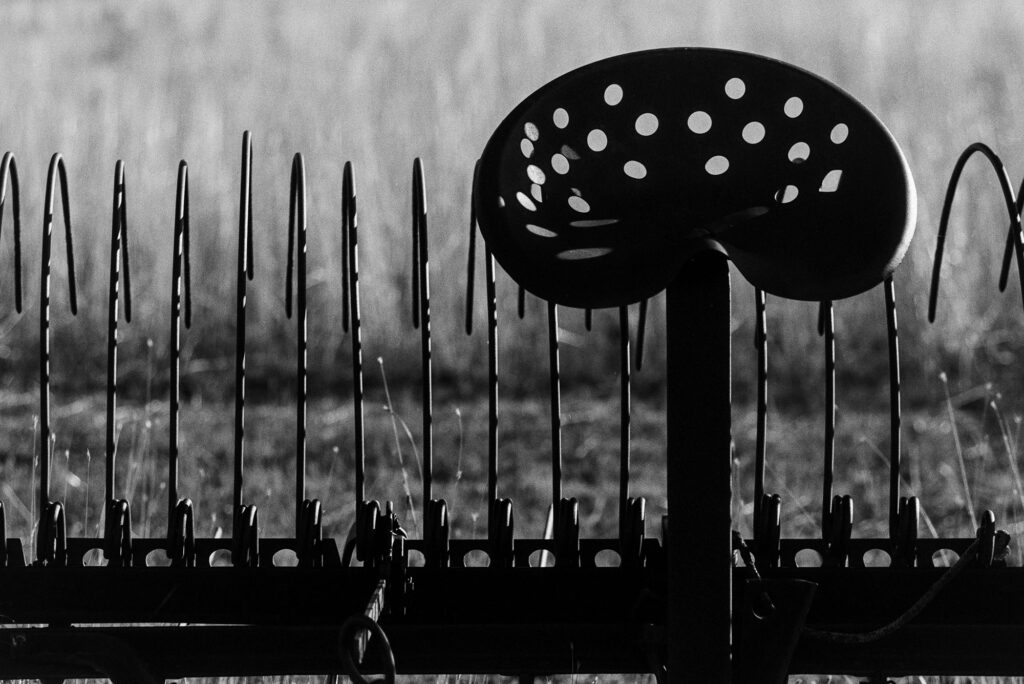
The viewfinder is generous and uncluttered, with a microprism focusing aid in the middle, surrounded by a concentric metering circle. On the left the meter reading is visible, with the full scale of shutter speeds available in automatic mode and a needle pointing to the indicated speed.
The full range of electronically-controlled speeds in the automatic mode is about 8 seconds to the full 1/1000 second, and also appears to be stepless. This results in potentially more accurate exposures, assuming both the meter and the shutter speeds are accurate to begin with. Four common button batteries drive the meter and the electronically-timed shutter. (LR44, A76, EPX76, etc.).
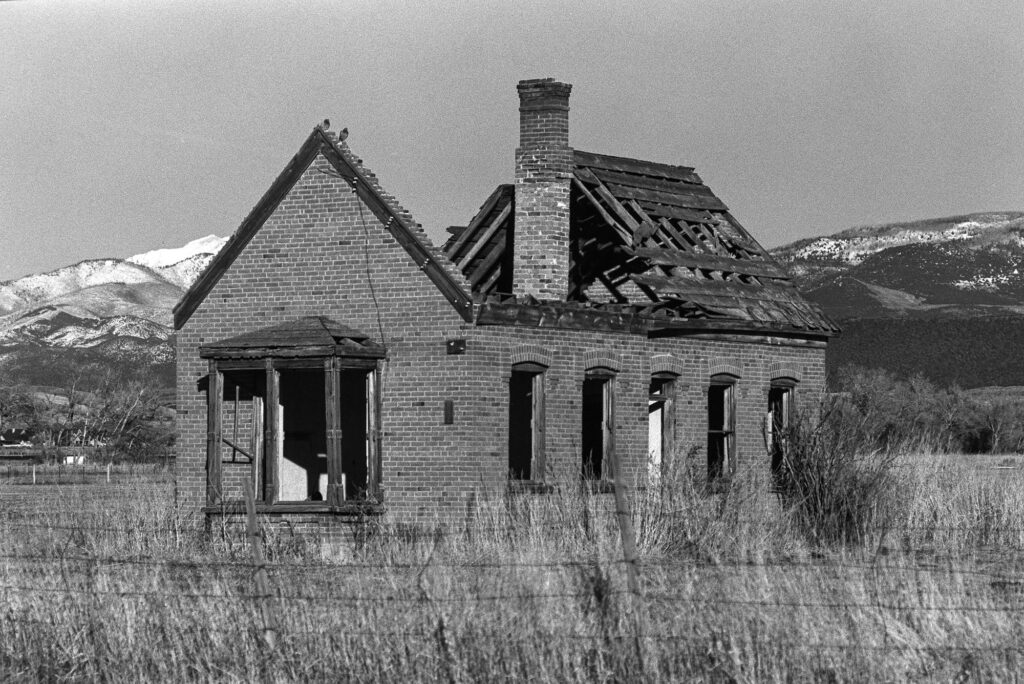
The shutter speed dial on the camera top has settings for shutter speeds of Bulb as well as 1/60 to 1/1000. Slower shutter speeds between 8 seconds and 1/30 are accessible only in the automatic aperture-priority mode. The photographer sets the aperture, and the camera chooses the shutter speed. That automatic mode, however, has a caveat. Open-aperture metering is only available with the new SMC line of lenses with the aperture coupling in the mount. What if you only have the old style of Pentax M42 lenses, or those of a different brand?
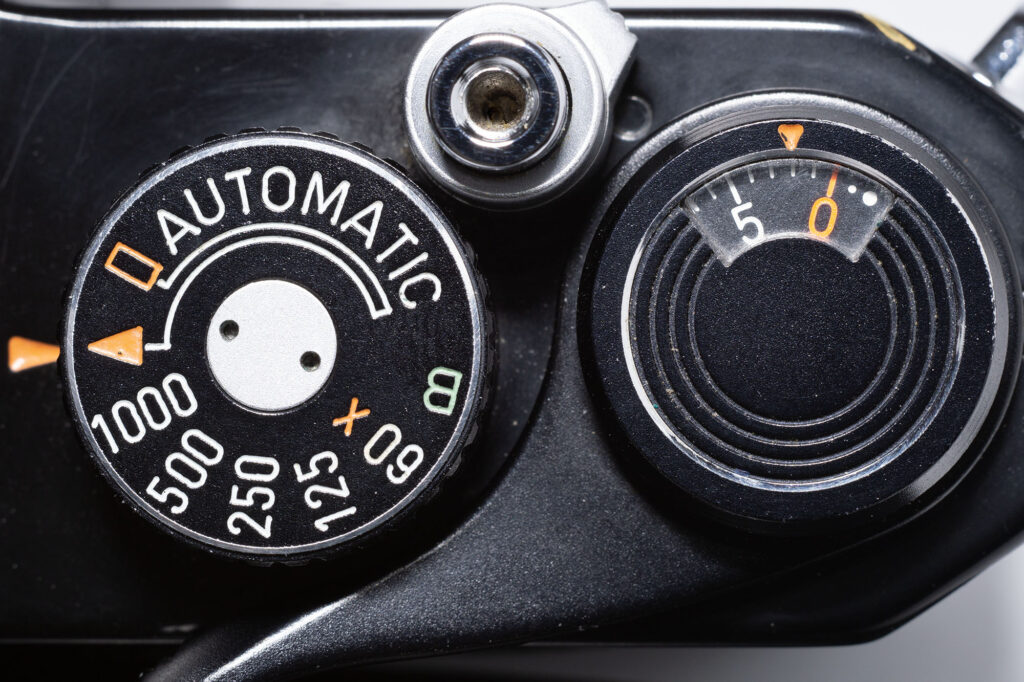
Some online reviewers state that you lose the ability to use the aperture priority mode with the older lenses, or lenses of an different brand. This is not entirely true. I was afraid that I couldn’t use the camera below 1/60 second because I didn’t have a lens that had the aperture coupling. After fiddling with it a bit, I found that while I couldn’t use the open-aperture metering, I could still use the stop-down metering switch with the automatic aperture-priority mode without a problem. Pentax didn’t abandon their previous users and render their older optics completely obsolete. I have a feeling that some folks have been scared away from the ES II because of the lack of that little piece of information.
When the shutter speed dial is set to “Automatic”, the meter is actuated by pressing the shutter release button down slightly. Locking the shutter release collar or setting the shutter speed dial to any manual speed can prevent battery drain while not in use.
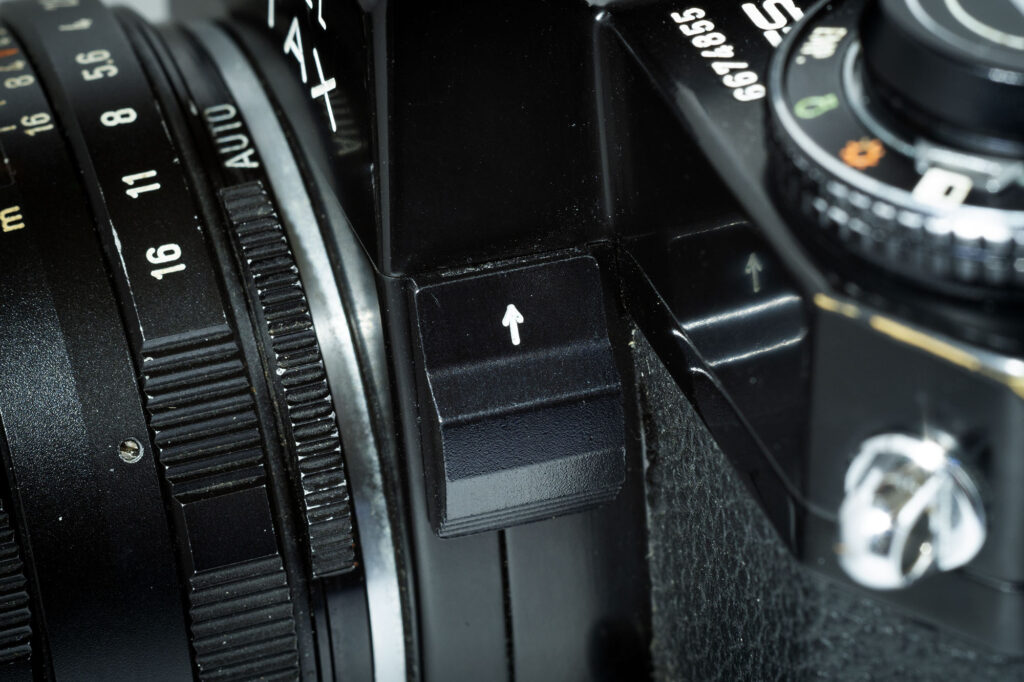
The other setting on the shutter speed dial is a viewfinder blackout switch. When the dial is set to this mark, the automatic mode is engaged and the viewfinder is blocked. This is useful on a tripod with slow shutter speeds, and prevents stray light from entering through the eyepiece. Other cameras have a blackout switch, and even more came with eyepiece covers to achieve the same end.
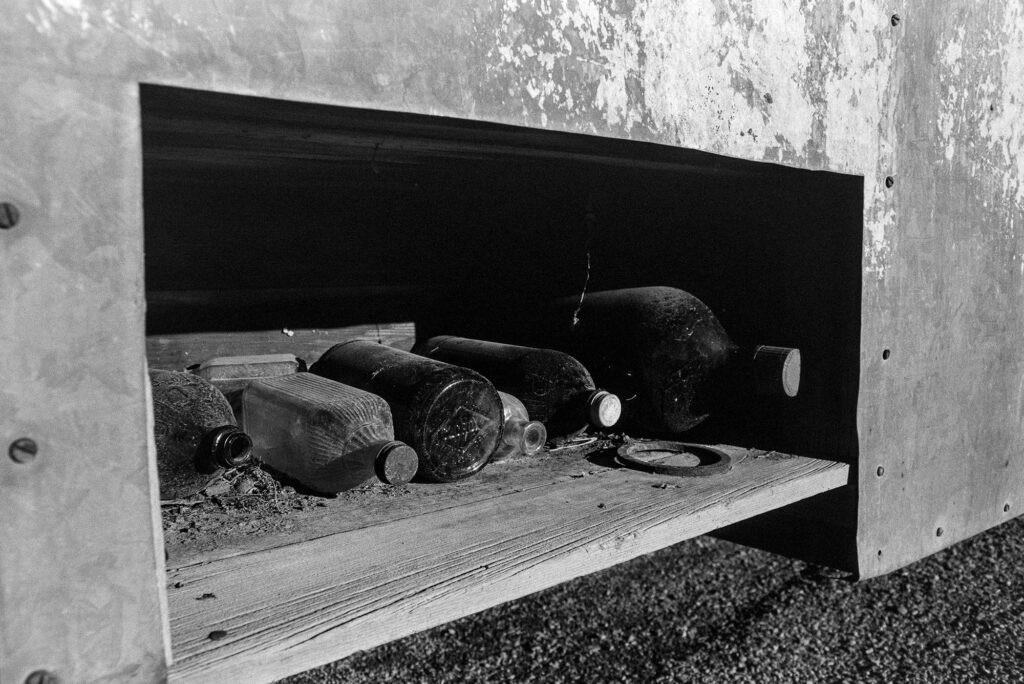
Another feature that is not obvious is a workaround for the lack of a “T”, or Time setting for the shutter. There is a shutter release lock collar around the button that prevents an accidental waste of a frame when engaged. However, when the shutter is set to “B”, or Bulb, and the collar is turned while the shutter button is depressed, the shutter stays open until the lock collar is returned to the unlocked position. Who knew?
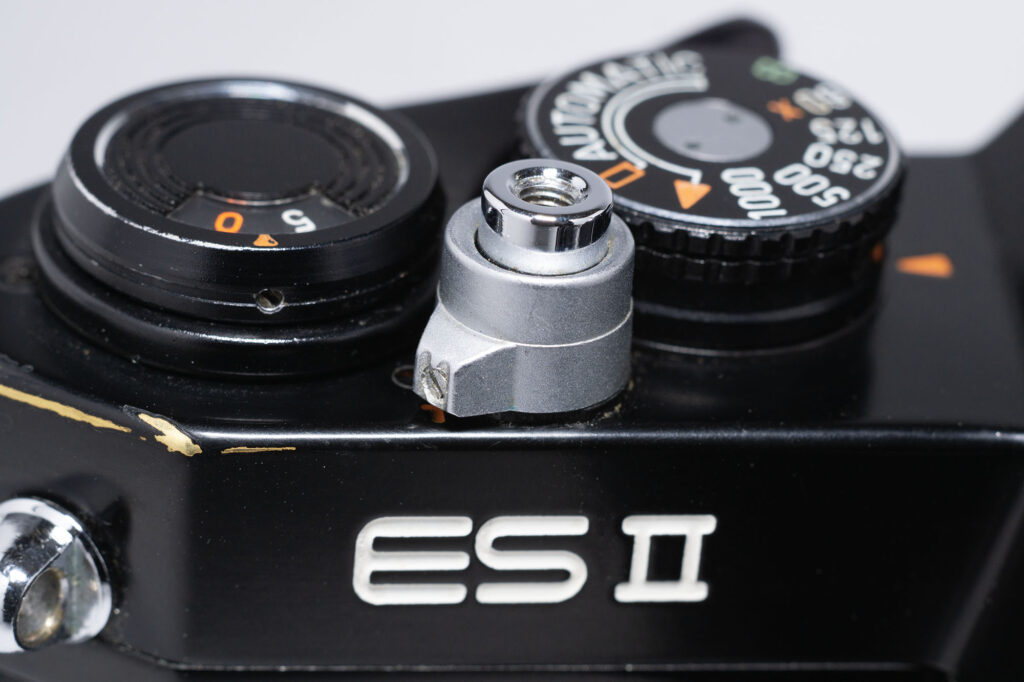
On the top left of the camera, there is a multi-function ring. One function is a film type reminder. It doesn’t control anything; it’s just an indicator. Lifting the outermost ring and turning it sets the ASA of the film. But, turning the ring without lifting it allows you to adjust the automatic exposure from one stop underexposed to two stops over. This is indicated by the settings labeled 1/2x, 1x, 2x, and 4x. Since adding one stop of exposure effectively doubles the amount of light hitting the film, “2x” is one stop over. “4x” is two stops over. “1x” is simply exposed at the meter’s nominal reading, and 1/2x is one stop under. That nomenclature is not used much these days, but it is good to understand.
The little black button is a battery check switch, which causes the needle in the viewfinder to drop to the middle notch of the scale if the batteries are good.
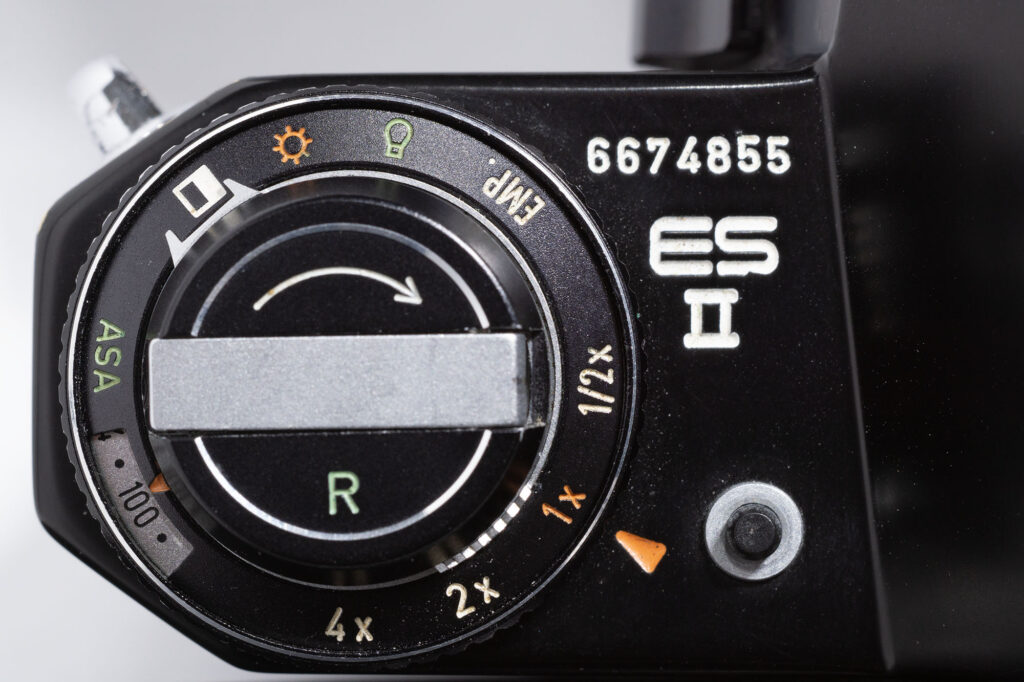
Are there any cons to this seemingly brilliant piece of kit? I would like to have seen a full set of shutter speeds as well as an automatic mode, but I understand that at this stage of camera design evolution that it simply is what it is. I just like having full control unless I decide to cede it to the camera. Another drawback is that the meter only operates in automatic mode. The camera is also a bit taller as a result of the electronics needing space. The circuitry lies just under the baseplate, and the base is noticeably thicker than that of other Spotties.
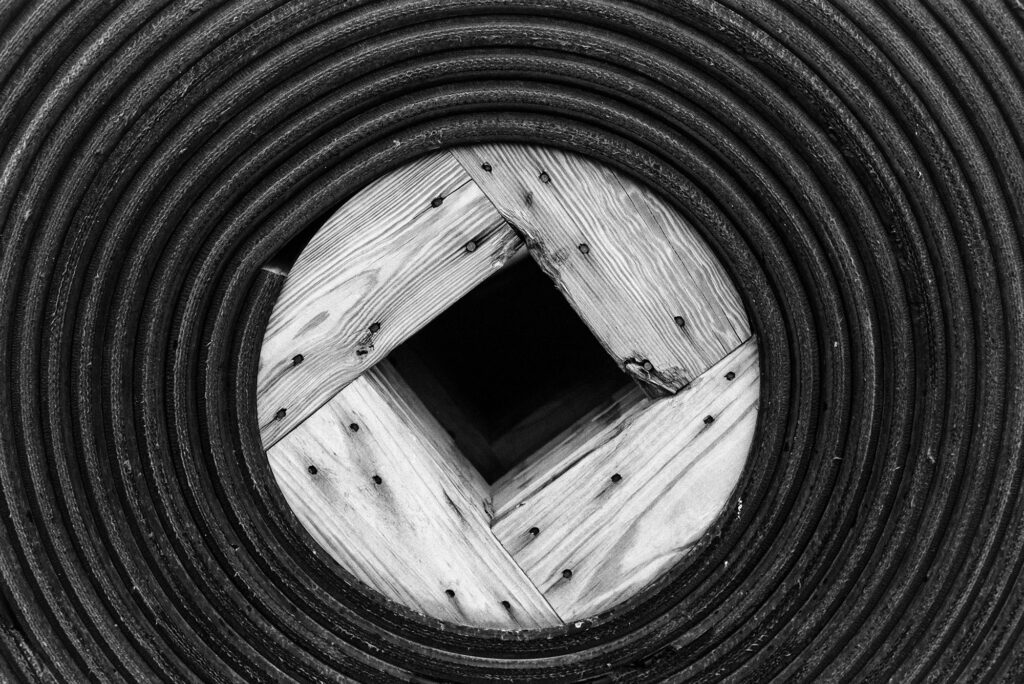
The ES II has the distinction of having captured what many argue to be the greatest Rock-N-Roll photograph of all time. That may be a bit hyperbolic, particularly if you ask Pennie Smith, the photographer who shot it. That said, it is immediately recognizable as the cover of the 1980 Clash album “London Calling”. The photo is of the bassist, Paul Simenon, smashing his bass guitar on the floor off-stage. Throughout the concert he had become increasingly upset at the crowd’s apparent lack of enthusiasm. He had not understood that the fans either could not stand up due to the type of seating, or the bouncers were keeping them down.
Versions of the story vary, but the net effect was a fit of rage and 36 millimeters of Tri-X film that seemed to embody the angst of punk music in 1979. Joe Strummer, the The Clash’s lead, chose the image himself for the cover. The image even became a British postage stamp in 2010.
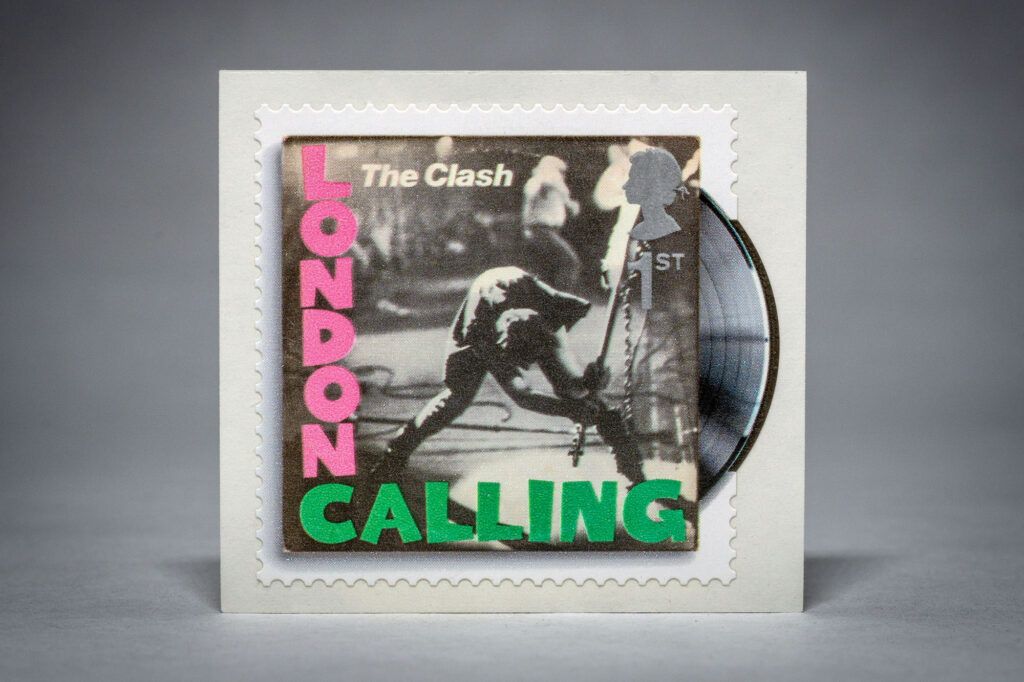
Part of the nostalgic romance of using vintage machines is accepting and embracing their quirks and limitations. Spotties of all variations have them. I seem to forget about them the second I hear the shutter and feel the buttery smooth film advance. The Spotmatic ES II is a well thought out machine at the apex of its evolution. I heard that the camera used by Pennie Smith to shoot the album cover it still working, after a full career of covering punk bands. Perhaps only a special few cameras would survive that.
I am listening to “London Calling” as I post this; it seemed fitting.
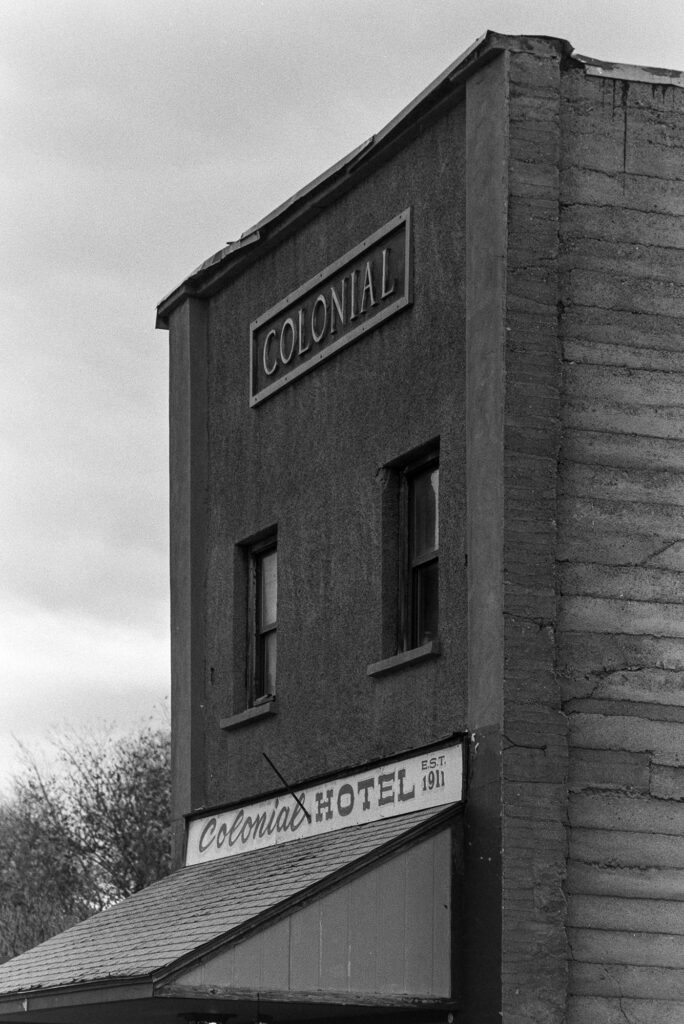
Specs as follows:
Designation: Pentax Spotmatic ES II 35mm SLR camera
Introduced: 1973, Japan
Weight: 684g (1lb 8.1oz)
Mount: 42mm thread mount (M42)
Shutter: Focal-plane horizontal cloth
Auto Shutter Speed Range: 8 seconds-1/1000 second
Manual Shutter Speed Range: 1/60-1/1000 second plus Bulb (and Time with lock collar)
Viewfinder: Pentaprism with Fresnel lens and microprism
Flash Sync: 1/60 second
ASA Range: 20-3200
Hot Shoe: Yes, plus PC socket
Meter: Center-weighted, open aperture (w/ SMC Takumar lenses)
Battery: 4 x A76 or equivalent
Self-Timer: Yes
DOF Preview: Yes, with meter switch
Mirror Lockup: No

